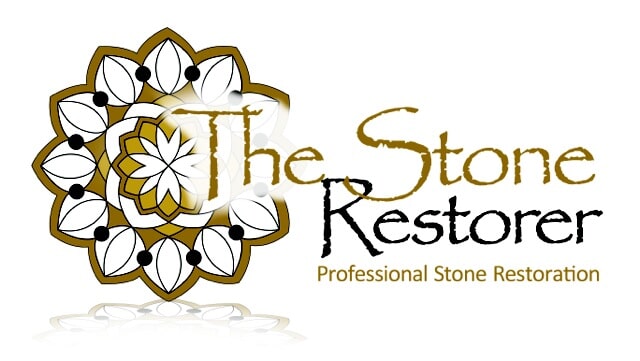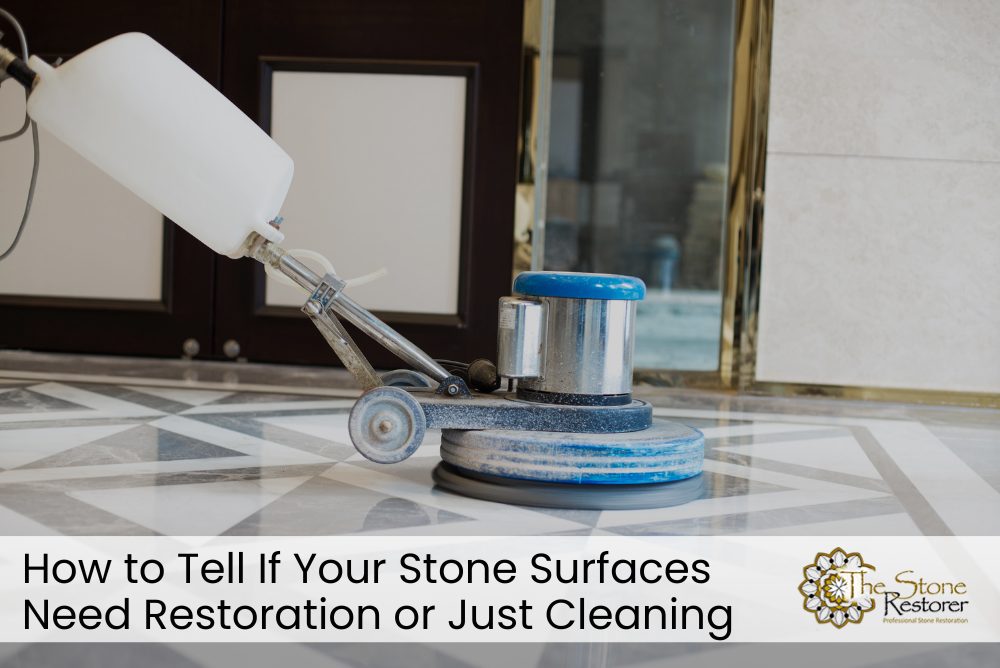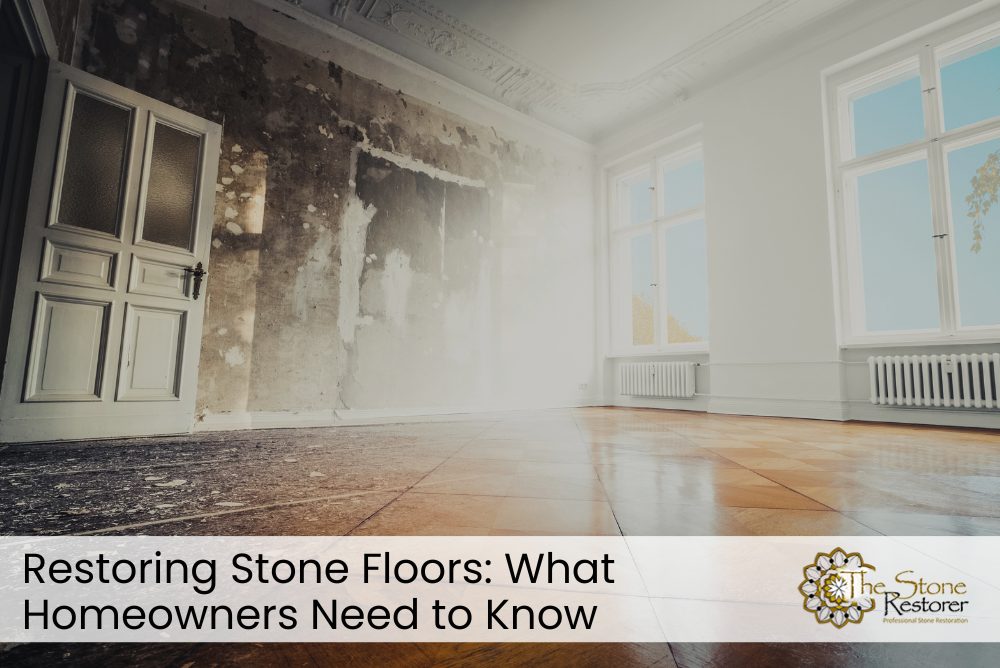Stone is strong. It’s beautiful too. But it’s not invincible. Natural stone surfaces—like marble, limestone, travertine or sandstone—can break down over time. Stains, scratches, and moisture can ruin the look. Worse, they can cause deep damage.
That’s why professional stone sealing matters. It’s like armour for your stone. It keeps your tiles looking fresh, makes cleaning easier and helps them last longer.
Many homeowners and businesses learn this the hard way. One job too many with harsh chemicals, or an overlooked spill, and suddenly your stone is stained or dull. But if you act early, you can avoid the mess and the money it takes to fix it.
Before we dig deeper, check this out on stone restoration to see how fixing damaged surfaces works.
Let’s explore the real benefits, how the process works, and what you need to watch out for.
What Is Stone Sealing?
Stone sealing is the process of applying a protective layer over natural stone. This layer blocks out water, oils, dirt, and stains. It keeps the stone from absorbing liquids that cause damage.
Natural stone is porous. That means it has tiny holes. These holes soak up liquid fast. Think of a sponge. Unsealed stone behaves the same way. It might look dry on the outside, but the inside can hold moisture and oil, which leads to stains and cracks.
Not every type of stone needs the same sealer. Some are more porous than others. A professional knows what type works best for each material.
Stone sealing also makes cleaning easier. Dust and dirt sit on top instead of sinking in. That means you need fewer harsh chemicals. Just a mop or soft cloth can keep sealed stone shining.
To know if your tiles are protected, see how to tell if your stone surface is sealed.
Why DIY Sealing Often Fails
Many people try to seal stone themselves. The bottles are easy to find. The directions look simple. But here’s the catch—small mistakes ruin the outcome.
Here’s what usually goes wrong:
- Wrong sealer type. Not all sealers work on all stone.
- Poor prep. Dust or moisture left behind affects the finish.
- Overapplication. Too much product leaves a cloudy mess.
- Uneven coverage. Skipped spots still absorb water.
A bad seal doesn’t just look off. It gives you false confidence that your surface is protected. Moisture still gets in. Stains still form.
In contrast, a professional uses tested methods. They prep properly, apply with the right tools, and check the finish. Most offer warranties too. If something goes wrong, they fix it.
Take time to understand how to seal natural stone floors effectively. Getting it right the first time saves you in the long run.
The Right Time to Seal Stone Surfaces
When is the best time to seal your stone? Right after installation is ideal. That’s when the surface is clean and untouched. Waiting too long means stains can set in.
Already got stone installed? No worries. You can seal older surfaces too—just make sure they’re cleaned and dried first.
Here are signs your stone might need sealing:
- Water no longer beads on top
- The surface feels rough or gritty
- You notice dark patches or water marks
- It looks dull or uneven in colour
If you’re unsure, a water drop test helps. Just drop a bit of water on the surface. If it soaks in within a minute, it’s time to reseal.
A good sealer lasts anywhere from 1 to 5 years, depending on traffic, location and stone type. Professionals usually track this for you.
But remember, don’t seal over moisture. Doing so traps it in and causes damage. That’s why it’s key to understand the importance of proper drying techniques for natural stone tiles.
Common Types of Sealers and Their Uses
There’s no one-size-fits-all when it comes to sealers. The right one depends on what you want your stone to do—and where it is.
Here are the most common types:
- Penetrating Sealers:
These soak deep into the stone. They block out water and oil without changing the look. Best for kitchens, bathrooms or outdoor areas. - Enhancing Sealers:
These also go deep but bring out the stone’s colour. They’re great for slate, travertine or any stone with rich tones. - Topical Sealers:
These form a layer on top. They offer a shiny or matte finish. Better for low-traffic areas or vertical surfaces like feature walls. - Hybrid Sealers:
Some products combine benefits. For example, they might offer UV protection for outdoor stone while enhancing colour.
The wrong sealer can trap moisture or make the surface slippery. A pro will test a small patch first to check for reaction.
How Weather Affects Sealing Results
Australia’s weather swings from hot and humid to dry and dusty. That matters more than you might think when sealing stone.
Sealing during high humidity can backfire. The stone holds moisture, which gets trapped under the sealer. Later, this causes cloudiness or peeling.
On hot days, sealers dry too fast. This makes it hard to spread them evenly. You end up with streaks or missed patches.
Professionals check weather before sealing. If needed, they reschedule. For outdoor jobs, early morning or cooler days are ideal. Indoor sealing is easier to control—but airflow still matters.
Want the best finish? Trust someone who understands local climate patterns.
Commercial vs. Residential Sealing: What’s Different?
The goal is the same—protect the stone. But how it’s done depends on how much foot traffic, what type of stone, and what the space is used for.
In homes, sealers last longer. There’s less wear. You can also choose more delicate finishes.
In shops, restaurants or hotels, the surface gets hit hard every day. Foot traffic, spills, cleaning chemicals—these all wear sealers faster. You need stronger products and more frequent maintenance.
For example, a Melbourne café sealed its marble floors with an industrial-grade penetrating sealer. They chose it for oil resistance and ease of daily cleaning. Two years later, it still looks polished despite the grind of coffee spills and heavy foot traffic.
Sealing Stone Outdoors
Outdoor stone faces the harshest elements—rain, UV rays, foot traffic, and sometimes salt or chlorine.
That’s why you need a breathable sealer. It blocks water but lets trapped moisture escape. Otherwise, the stone can break from inside out.
Look for these in a good outdoor sealer:
- UV protection to stop fading
- Slip resistance to prevent falls
- Mildew and mould resistance
Driveways, pool surrounds, patios—all need regular checks. Reseal every 1-2 years depending on exposure. If you’re near the coast, salt damage is another reason to stay on top of it.
The Cost of Skipping Sealing
Some skip sealing to save money. But it ends up costing more. Unsealed stone gets stained, cracked, or faded. Replacing or restoring stone costs far more than sealing it.
Here’s what can happen without sealing:
- Etching: Acids in food or drink leave marks.
- Staining: Oils soak into porous surfaces.
- Mould growth: Moisture builds up in damp areas.
- Discolouration: UV or water damage changes the colour.
Fixing these takes grinding, polishing or full replacement. It’s not cheap—and some damage is permanent.
One homeowner in Brisbane ignored sealing for their limestone alfresco. After just one summer, rain and BBQ grease left dark spots all over. It took a full restoration and resealing to fix it.
Maintenance Tips After Sealing
Sealing isn’t a one-and-done fix. It buys you time and protection, but you still need to care for the surface.
Here’s how to keep it in top shape:
- Use pH-neutral cleaners—no bleach or vinegar
- Wipe up spills quickly, especially oils or acids
- Avoid dragging furniture or pots across the surace
- Mop regularly with warm water
- Re-seal based on traffic and wear
Simple habits go a long way. Sealing helps the stone fight back, but it’s still up to you to keep it looking sharp.
FAQs
1) How long does stone sealing last?
It depends on the stone type, traffic, and where it’s located. In most homes, sealing can last 2 to 5 years. High-traffic spots or outdoor areas might need resealing every 12 to 24 months. If water no longer beads up or the surface looks dull, it’s time for another coat.
2) Is sealing necessary for all stone surfaces?
Most natural stones need sealing. Marble, limestone, sandstone, and travertine are all porous. Even granite can benefit from sealing, especially in kitchens. Only some synthetic or dense stones don’t need it. Ask a professional to test your surface if you’re unsure.
3) Can I seal stone myself?
You can try, but it’s tricky to get right. You need to choose the correct sealer, prep the stone perfectly, apply evenly and avoid overdoing it. Miss one step and you could end up with a blotchy or sticky surface. A professional gets better, longer-lasting results.
4) What’s the difference between penetrating and topical sealers?
Penetrating sealers soak into the stone and protect from within. They’re invisible and don’t change the look. Topical sealers sit on top like a coating. They can give a gloss or matte finish but may wear faster and need more upkeep.
5) Does sealing make stone waterproof?
Sealing makes stone water-resistant, not waterproof. It stops water and oils from soaking in too fast. But it doesn’t make the surface immune to standing water or long exposure. That’s why care and proper cleaning still matter.
Seal It Right, Keep It Bright
Stone is tough, but sealing makes it tougher. It keeps the surface looking new and protects what’s underneath. Whether you’re dealing with an outdoor patio, kitchen floor, or bathroom wall, sealing gives you peace of mind.
It’s not just about looks—it’s about making smart choices early to avoid costly fixes later. Professionals bring skill, the right tools, and an eye for detail that DIY kits can’t match.
If you want your floors and surfaces to last for years without stress, get help from the experts at The Stone Restorer. Our work speaks for itself.
Give us a call today at 0414 469 301 or ask us for a fast free quote on your tile cleaning or restoration project






